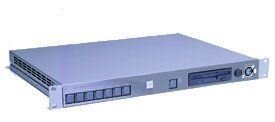I have read a couple threads and some information on this, but wanted to get some feedback on my specific situation.
I am the technical director at my church and we are currently have an opportunity to possibly get a really good deal on a used lighting console, but I wanted to make sure it was the right decision.
In terms of lighting we are using 10 PAR 64 RGB LED's, 2 Elation design spots, 8 non-dimmable LED's and the house lights of course. The controller we are using is a PC loaded with Compulive2006.
I have been looking at changing at least the software for a while as I feel as if the Compulive2006 program does not have all the features that I would like to have in a lighting controller.
The Question: Should I...
1.) stick with what I have
2.) change to better functioning software(magicQ, BlueLite, etc...)
3.) purchase an ETC Express 24/48 for $2000
4.) purchase an ETC Express 48/96 for $3000
5.) purchase an ETC Obsession II Lighting Console for $3000
Please note that as we do not have a ton of fixtures right now, we are going through a major expansion and could possible be adding more fixtures soon, so I want to have the capability to utilize whatever new fixtures we come across.
Thanks for the input!
I am the technical director at my church and we are currently have an opportunity to possibly get a really good deal on a used lighting console, but I wanted to make sure it was the right decision.
In terms of lighting we are using 10 PAR 64 RGB LED's, 2 Elation design spots, 8 non-dimmable LED's and the house lights of course. The controller we are using is a PC loaded with Compulive2006.
I have been looking at changing at least the software for a while as I feel as if the Compulive2006 program does not have all the features that I would like to have in a lighting controller.
The Question: Should I...
1.) stick with what I have
2.) change to better functioning software(magicQ, BlueLite, etc...)
3.) purchase an ETC Express 24/48 for $2000
4.) purchase an ETC Express 48/96 for $3000
5.) purchase an ETC Obsession II Lighting Console for $3000
Please note that as we do not have a ton of fixtures right now, we are going through a major expansion and could possible be adding more fixtures soon, so I want to have the capability to utilize whatever new fixtures we come across.
Thanks for the input!



